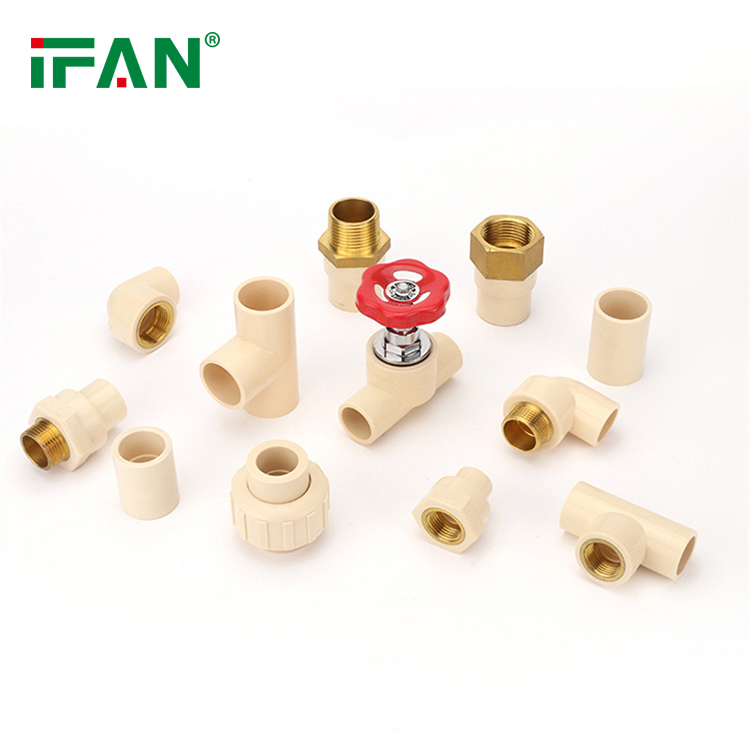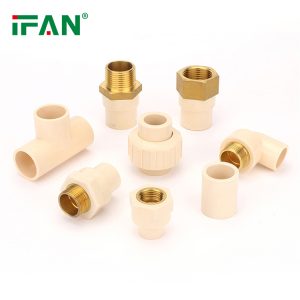Description
IFAN factory 30+ years manufacture experience support color /size customization support free sample.Welcome to consult for catalog and free samples.This is our Facebook Website:www.facebook.com,Click to watch IFAN’s product video.Compared with Tomex products, our IFAN products from quality to price are your best choice, welcome to buy!
Chlorinated Polyvinyl Chloride (CPVC) fittings have become a staple in plumbing and industrial applications due to their unique properties and versatility. Understanding the history and development of CPVC fittings provides insight into their widespread use and advantages over traditional materials. This article explores the evolution of CPVC, from its inception to its current status in the market.
 1. Origins of PVC and the Introduction of CPVC
1. Origins of PVC and the Introduction of CPVC
The story of CPVC begins with the creation of Polyvinyl Chloride (PVC) in the early 20th century. PVC was first synthesized in 1872, but it wasn’t until the 1920s that it gained commercial significance. By the 1950s, the need for more durable and heat-resistant materials led to the chlorination of PVC, giving rise to CPVC. This modification involves the addition of chlorine atoms to the PVC polymer chain, enhancing its thermal stability and chemical resistance. This innovation marked a significant advancement, allowing CPVC to withstand higher temperatures than its predecessor, making it suitable for hot water and industrial applications.
2. Advancements in Manufacturing Techniques
As demand for CPVC fittings grew, advancements in manufacturing techniques played a crucial role in their development. Initially, the production of CPVC was limited and involved complex processes. However, innovations in extrusion and molding technologies during the late 20th century streamlined the manufacturing process. These advancements enabled manufacturers to produce CPVC fittings in various shapes and sizes, catering to diverse applications. Enhanced production methods also improved the consistency and quality of CPVC products, further solidifying their place in the plumbing industry.

3. Regulatory Approval and Industry Adoption
The 1980s and 1990s marked a pivotal period for CPVC fittings as they began to receive widespread regulatory approval. Organizations such as the American National Standards Institute (ANSI) and the International Association of Plumbing and Mechanical Officials (IAPMO) established standards for CPVC materials. These approvals reassured contractors and builders about the safety and reliability of CPVC in plumbing systems. As a result, many municipalities and states adopted CPVC as an approved material for hot and cold water distribution systems, leading to its rapid adoption across residential and commercial sectors.
4. Expanding Applications and Market Growth
With the increasing recognition of CPVC’s benefits, its applications expanded beyond just plumbing. The material found uses in industrial piping systems, fire sprinkler systems, and even chemical transportation due to its excellent corrosion resistance and durability. This versatility contributed to significant market growth in the CPVC sector. Manufacturers began to innovate further, developing specialized fittings and pipe systems tailored to specific industries, such as pharmaceuticals and food processing, where hygiene and chemical compatibility are paramount.
5. Sustainability and Future Developments
In recent years, the focus on sustainability has influenced the development of CPVC fittings. Manufacturers are exploring eco-friendly production processes and the recyclability of CPVC materials. Innovations in formulations aim to reduce environmental impact while maintaining performance standards. Additionally, ongoing research is examining how CPVC can be enhanced to meet evolving industry needs, including better resistance to emerging contaminants and increasing energy efficiency. As awareness of sustainability grows, the future of CPVC fittings will likely involve a stronger emphasis on environmental responsibility alongside performance.
Conclusion
The history and development of CPVC fittings reflect a journey of innovation and adaptation within the plumbing and industrial sectors. From the initial synthesis of PVC to the advanced manufacturing techniques and regulatory approvals that followed, CPVC has established itself as a reliable and versatile material. Its expanding applications and focus on sustainability indicate that CPVC fittings will continue to play a vital role in modern infrastructure. Understanding this evolution not only highlights the significance of CPVC in today’s market but also sets the stage for future advancements in piping technology.
Related products
-
CPVC ASTM2846
Why is CPVC not used anymore?












